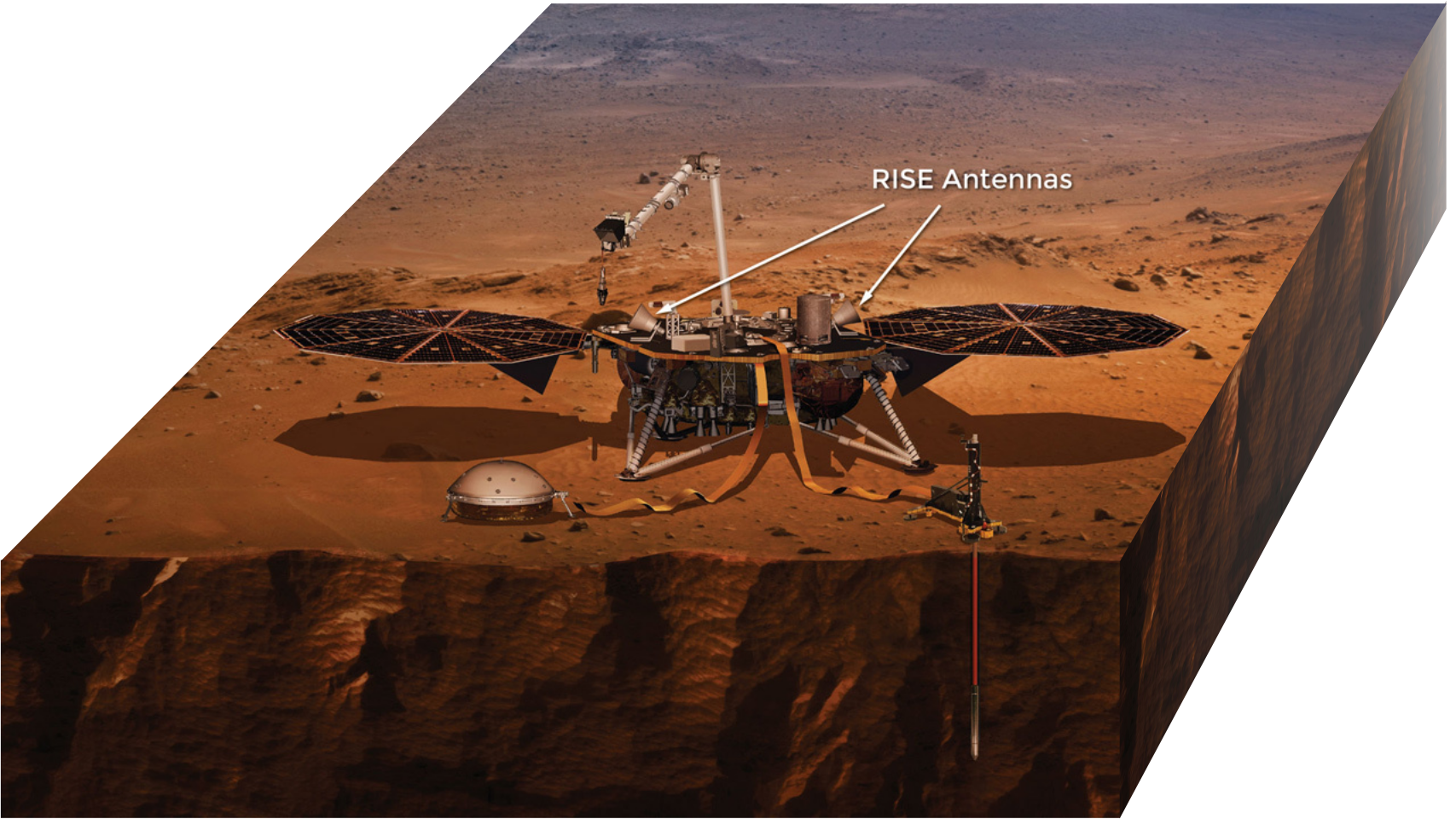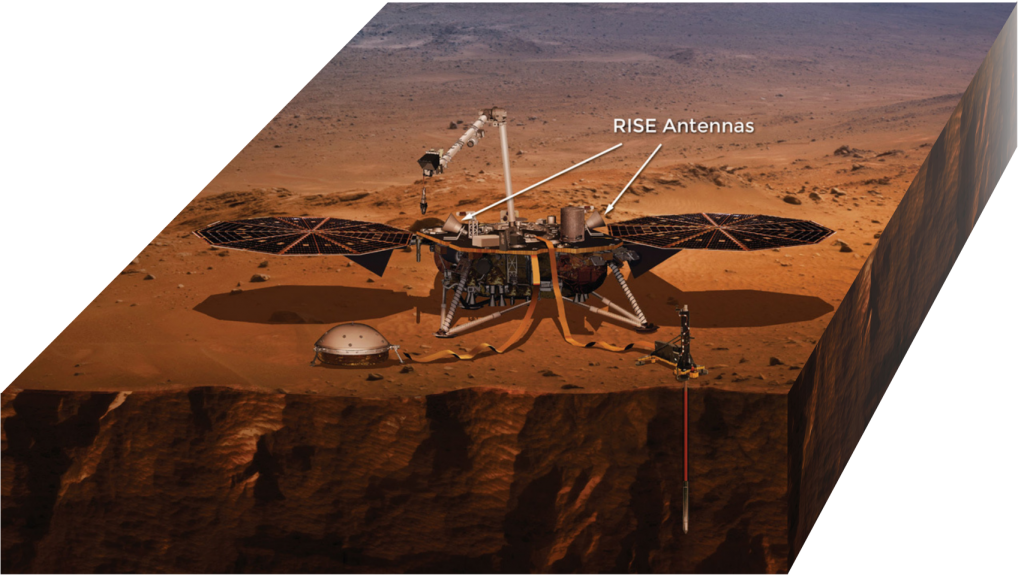New Insights Into the Liquid Core of Mars Published in Nature
New results from the radio-science instrument of the NASA InSight mission on Mars are published today in the scientific journal Nature. With the data accumulated during the first two and a half years of the mission, a team of planetary scientists mainly from the Royal Observatory of Belgium has precisely measured the rotation of Mars. They detected a signature that can only be explained by the presence of a liquid core. These variations in rotation provide important information about the deep interior of Mars.
In November 2018, the NASA InSight mission successfully touched down in the region of Elysium Planitia on the surface of Mars. As suggested by its acronym (Interior exploration using Seismic Investigations, Geodesy, and Heat Transport), this mission was the first of its kind, dedicated to the exploration of the deep interior of Mars. InSight was equipped with a seismometer and a radio-science transponder named RISE (Rotation and Interior Structure Experiment). The mission concluded in December 2022.
The RISE experiment was specifically designed to measure the nutations of Mars. Nutations are the periodic oscillations, also called wobbles, of the spin axis in space. Sébastien Le Maistre, the lead author explains: “The RISE transponder has the ability to establish communication with gigantic (up to 70 m dish) radio-telescopes on Earth and of measuring the tiniest variations of the distance between a lander on Mars and Earth, caused by the orbital and rotational movements of the two planets. For the first time, we detected at such a large distance, hundreds of millions of km, the 40 cm oscillations due to the presence of the Martian liquid core. These oscillations are affected by a resonant behavior that only occurs when the core is liquid.”
In the analysis of the very precise RISE data, the team included hitherto neglected effects such as the noise introduced by the propagation of the radio signal through the atmosphere of Mars. They also took into account the effect of the dust storms that occurred just before and after InSight landing, temporarily changing the rotational speed of Mars. Rose-Marie Baland, who studies the rotation of the red planet, adds: “We included in the rotation model of Mars hitherto neglected contributions, such as nutations related to the gravitational pull of the Martian moons Phobos and Deimos and accelerations in the rotation and precession. We also improved the estimated relativistic corrections to the spin variations.”
The observed characteristics of the resonance provide new information about the interior structure of Mars, confirming some of the results obtained with the seismometer on InSight. Attilio Rivoldini, expert on the interior of Mars, says: “Using the novel data we have determined the radius of the liquid core, confirming the value deduced from seismic data, and estimated the density difference between the mantle and the core. Moreover, we have been able to determine the shape of the core, which can only be explained if mass anomalies exist deep within the mantle. Taken together, those new findings increase our knowledge about the interior structure of Mars, its formation, and subsequent evolution.”
“Geodesy of Mars is one of the expertise domains of the planetary scientists at ROB. With the support of the Belgian Science Policy Office (BELSPO), we developed LaRa (Lander Radioscience), an instrument similar to RISE that is ready to fly, just waiting for the next taxi to Mars (or elsewhere). We have also contributed to several analyses of orbiter data,” says Véronique Dehant, responsible for the Operational Direction Reference Systems and Planetology at the Observatory.
“We hope that soon, by analyzing the complete RISE dataset, we will be able to further constrain not only the interior, but also the dynamics of the Martian atmosphere and its interaction with the planet’s ice caps,” concludes Sébastien Le Maistre.
See also our news article published in the Nature blog Behind the Paper: https://astronomycommunity.nature.com/posts/detection-of-tiny-variations-in-the-rotation-of-mars-used-to-characterize-its-liquid-core
Reference
Le Maistre, S., Rivoldini, A., Caldiero, A. et al. Spin state and deep interior structure of Mars from InSight radio tracking. Nature (2023). DOI: 10.1038/s41586-023-06150-0.
Read also
https://www.astro.oma.be/en/insight-landing-mars-on-the-verge-of-revealing-its-secrets/
https://www.astro.oma.be/en/planet-mars-first-results-of-the-insight-mission-published-in-nature-geoscience/
https://www.astro.oma.be/en/mars-interior-structure-revealed-by-insight-seismic-data/
https://www.astro.oma.be/en/the-core-transiting-seismic-waves-unveil-the-properties-of-the-martian-core/


